How-to Make Nut Milk
I am super excited to share this tutorial with you guys! Many of you have asked for a tutorial on nut milks, since I started the Tutorial Tuesdays Series. I have been making my own nut milks for quite a few years now. Once I realized just how simple it was, I have made a quart of almond milk nearly every single week.
I also love making variations on the flavors, at least once a month I make a quart of raw cacao almond nut milk. It’s the perfect sweet treat for me.
Much like my nut butter post, this is a general overview on how to make nut milks, but really the sky is the limit. If you have a favorite nut – I say MILK IT! As with the nut butters, I recommend soaking your nuts first, but for nut milks dehydration isn’t necessary, so it’s that much easier. Below you will find a chart on soaking times for various milks.
What Nuts Can You Milk?
First of all, let’s just get all the giggles out now. Sooo many amazing innuendos when it comes to nut milks. Oh, and guess what? It doesn’t get old. Everytime I pull my nut bag out. A good laugh is had! Anyhow – I myself have made nut milks from almonds, cashews, hazelnuts, macadamia nuts and pistachios, but from what I understand the same rules apply no matter what nut you choose, so you can create nut milks from any of the other nuts listed below and likely many others, too. FYI macadamia nut milk is amazing, so rich and full of incredible flavor, but literally it may be the most expensive nut milk you can make. I made a batch for this testing and I kinda wish I hadn’t. It was so good.
How & Why to Soak Your Nuts
Why I Choose to Soak: Most nuts, seeds, grains and beans are covered in natural chemicals – enzyme inhibitors and toxins – that protect them while growing, both from sprouting prematurely and also from predators. These nutritional inhibitors and toxic substances are enzyme inhibitors, phytates (phytic acid), polyphenols (tannins), and goitrogens. Once harvested, those same chemicals, the major one being phytic acid – are indigestible to the human body and must be broken down before consumption. When food containing phytic acid is consumed, the acid combines with important minerals like calcium, magnesium, copper, iron and especially zinc in the intestinal tract and blocks their absorption which inhibits our digestive systems’ ability to break the nut down properly.
The very simple process of soaking releases these chemicals, helping you to absorb your food’s essential minerals and nutrients. Additionally, by soaking the nuts with the removal of these nutritional inhibitors and toxic substances, the flavor and taste is much more ideal and appealing.
To summarize: Soaking nuts makes them easier to digest and improves their flavor.
How-to Make Homemade Nut Milks
1) Soak your nuts in filtered water for the appropriate time, drain and rinse.
2) Blend your soaked nuts with filtered water, adding in any flavorings you would like.
3) Pour into your nut milk bag and squeeze. Separating the pulp from the milk.
[print_this]Homemade Nut Milkmakes 1 quart
- 1-2 cups raw unsalted organic nuts*
- 4 cups filtered or purified water
Optional:
- pinch of himalayan sea salt (optional)
- 1-2 tablespoon local raw honey or other sweetener (optional)
- 1 vanilla bean or 1 teaspoon vanilla extract (optional)
1) Soak your nuts and vanilla bean (if you are using one) for at the appropriate amount of time (see above chart for appropriate soaking times)
2) Discard soaking water and rinse your nuts and the vanilla bean.
3) Place soaked nuts, the whole soaked vanilla bean (you can chop it up or split it open if you wish) or vanilla extract, honey (or other sweetener), a dash of sea salt and 4 cups of water in a blender. Cover and blend on high for 1-2 minutes. It will be milky and have a bit of foam on the top.
4) Strain milk through a nut bag and squeeze into a bowl. (see my suggestions below on what I use)
SERVE.[/print_this]
* I find that 1 cup of nuts is more than enough for 1 quart of milk, some people prefer 2 cups.
NOTES:
These same instructions work for any nut that you prefer to use. Though, generally almonds are my go-to choice.
Store in a covered glass jar, bottle or pitcher in the refrigerator, it’ll be good for about 4-5 days.
Separation is totally natural with homemade nut milks, just be sure to shake it up just before serving.
This rich and creamy flavorful milk is amazing in smoothies and over your favorite cereal.
[print_this]Vanilla Bean Cashew Milkmakes 1 quart
- 1 cup raw unsalted organic cashews
- 4 cups filtered or purified water
- pinch of himalayan sea salt
- 1 tablespoon local raw honey or other sweetener
- 1 vanilla bean
1) Soak your raw cashews and vanilla bean in filtered water for at least 2 hours.
2) Discard soaking water and rinse your cashews and the vanilla bean.
3) Place soaked cashews, honey (or other sweetener), vanilla bean, a dash of sea salt and 4 cups of water in a blender. Cover and blend on high for 1-2 minutes. It will be milky and have a bit of foam on the top.
4) Strain milk through a nut bag, doubled up cheesecloth or a fine mesh strainer. (see my suggestions below on what I use)
Notes: Some people prefer not to strain their cashew milk, since it technically doesn’t have to be, (think about all those glorious creamy cashew cream sauces). Even though it has far less pulp than other nuts, I don’t have a Vitamix (yet) so I personally don’t love the grittiness that mine still had. [/print_this]
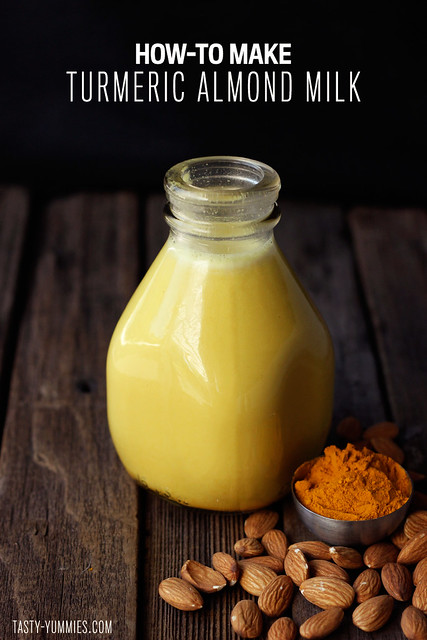
Reap all of the wonderful anti-inflammatory benefits of both the raw almonds and the turmeric. This drink is great served chilled and even better warmed up and served as a hot, comforting beverage to cure all that ails. Boost turmeric’s anti-inflammatory properties by adding a some healthy fat and/or black pepper when consuming.
[print_this]Turmeric Almond Milkmakes 1 quart
- 1 cup organic raw unsalted almonds
- 4 cups filtered or purified water
- pinch of himalayan sea salt (optional)
- 1 tablespoon local raw honey or other sweetener (optional)
- 1-2 tablespoons turmeric powder (I find turmeric to have a mild flavor, so I go with 2 tablespoons)
1) Soak your almonds in filtered water for 8-12 hours.
2) Discard soaking water and rinse your almonds.
3) Place soaked almonds, honey (or other sweetener), turmeric powder, a dash of sea salt and 4 cups of water in a blender. Cover and blend on high for 1-2 minutes. It will be milky and have a bit of foam on the top.
4) Strain milk through a nut bag, doubled up cheesecloth or a fine mesh strainer. (see my suggestions below on what I use) [/print_this]
This nut milk is LIFE CHANGING! It literally tastes like Nutella, but in drink form :SWOON: I love it as a sweet way to finish my day, instead of a dessert.
[print_this]Raw Cacao Hazelnut Milkmakes 1 quart
- 1 cup raw unsalted organic hazelnuts
- 4 cups filtered or purified water
- pinch of himalayan sea salt
- 2 tablespoons local raw honey or other sweetener
- 1 vanilla bean
- 2 tablespoons raw cacao powder
1) Soak your raw hazelnuts and vanilla bean in filtered water for 8 hours.
2) Discard soaking water and rinse your hazelnuts and the vanilla bean.
3) Place soaked hazelnuts, honey (or other sweetener), vanilla bean, raw cacao powder, a dash of sea salt and 4 cups of water in a blender. Cover and blend on high for 1-2 minutes. It will be milky and have a bit of foam on the top.
4) Strain milk through a nut bag, doubled up cheesecloth or a fine mesh strainer. (see my suggestions below on what I use) [/print_this]
Pistachio milk has a very strong and distinct, nutty flavor. If you love pistachios, this one is definitely for you. Plus, that subtle green hue is just so beautiful. I am not sure if it’s because of their complimentary hues or if they truly are a great match – but I love adding a little ground cardamom to my pistachio milk. Pistachio milk and it’s strong taste to me, isn’t exactly my favorite nut milk for straight drinking, but it makes a wonderful addition to smoothies and creamy sweet dessert recipes.
[print_this]Pistacho Milkmakes 1 quart
- 1 cup raw unsalted organic pistachios
- 4 cups filtered or purified water
- pinch of himalayan sea salt
- 1 tablespoon local raw honey or other sweetener
- 1 vanilla bean or 1 teaspoon vanilla extract (optional)
NOTE: Pistachios do not need to be soaked – so you can go to town and make your pistachio milk, whenever you’d like.
1) Place the pistachios, honey (or other sweetener), vanilla bean (or vanilla extract), a dash of sea salt and 4 cups of water in a blender. Cover and blend on high for 1-2 minutes. It will be milky and have a bit of foam on the top.
2) Strain milk through a nut bag, doubled up cheesecloth or a fine mesh strainer. (see my suggestions below on what I use)[/print_this]
Optional Add-ins for Your Nut Milks
For every batch of nut milk I make, I always add a pinch of pink Himalyan sea salt and about 1-2 tablespoons of local raw honey (unless I need unsweetened nut milk for a savory dish some reason). Besides that there are so many variations and fun things you can add to your nut milks.
SWEETENERS: Besides raw local honey which is my favorite, other options for natural sweeteners include: medjool dates, maple syrup, coconut nectar, raw sugar, stevia, xylitol and so on.
FLAVORS: For flavorings there are so many lovely possibilities. Some of my favorites are vanilla bean, vanilla extract, raw cacao, lavender (which is just incredible), turmeric, spices such as cinnamon, nutmeg, cardamom, etc. There are so many amazing possibilities.
OTHER: You can also add things like hemp seeds for additional some Omega-3 and Omega-6 and protein, coconut water instead of regular water for a fun flavor twist, you can add oats, flaxseeds and so on. Have fun with it.
What To Do With Your Nut Milks
You can use nut milks just as you would regular milk in any recipes, including baked goods. Remember if you are using homemade nut milk in a savory recipe, leave out the sweetener and additional flavorings, such as vanilla. I love enjoying my homemade nut milks cold straight from the fridge in a tall glass, they are the best in homemade smoothies, nut milks are also great served hot in homemade hot cocoa, a mocha, coffee or tea lattes and so one. Add it to a shaker with your favorite spirits and you can make amazing cocktails. The list goes on and on. How do you enjoy your nut milks?
What To Do With the Leftover Pulp
There are so many different uses for the leftover pulp you can add it to smoothies or your morning oatmeal, you can add it to dips, homemade granolas, to the batter of your cookies or muffin, crackers, or you can even dehydrate it and then blend it up to make almond meal. When all else fails freeze it for later or compost it if you really don’t have room for it.
Here are some great recipes for things you can do with the leftover pulp:
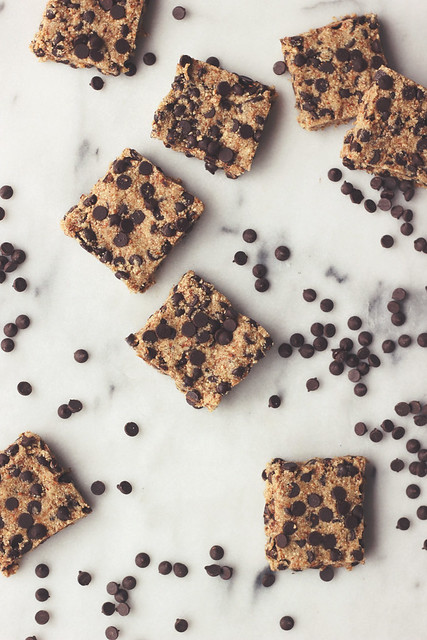
Raw Chocolate Chip Cookie Dough Bars Tasty Yummies
Chipotle Almond Dip Tasty Yummies
Almond Pulp Body Scrub The Blender Girl
Vanilla Almond Sugar Cookies Tasty Yummies
Almond Pulp Crackers Elana’s Pantry
Almond Pulp Brownies The Bojon Gourmet
Almond Cookie Balls Laura’s Sweet Spot
Nut-free Non-Dairy Milk Recipes
Can’t have nuts? Here are a few nut-free non-dairy milk recipes for you:
How-to Make Coconut Milk from Shredded Coconut So Let’s Hang Out for The Kitchn
Brown Rice Milk Happy Yolks
Vanilla Hempseed Milk Healthful Pursuit
Oat Milk Happy Food Healthy Life
Coconut Milk from Fresh Whole Coconuts Nourished Kitchen
Sunflower Seed Milk Healthful Pursuit
Coconut Oat Milk Running to the Kitchen
Rice Milk Horchata Tasty Yummies
Pumpkin Spiced Pepita Milk Beard and Bonnet
Flax Milk Healthful Pursuit
Nut Milk Bags
I was using this nut bag for quite a while, but I didn’t love that it wasn’t made from organic materials.
I recently bought this organic cotton nut milk bag from Cultures for Health and I absolutely love it. I feel so much better using it knowing that it is fully organic and the quality is incredible.
The great thing about most nut milk bags is that you can also use them for sprouting nuts, seeds and grains.
** I personally do not recommend using the cheesecloth, strainer or pantyhose methods, they are messy and require multiple passes to strain all the bits out. It is never quite as creamy as when I use a good nut milk bag.
For those curious, this is the blender that I use. It works great! Someday I will splurge and get a Blentec or Vitamix, until then – this works just perfectly!
Disclosure: This post contains affiliate links. If you make a purchase using these links – your cost remains the same, but I earn a small percentage to help support this blog. Thank you!

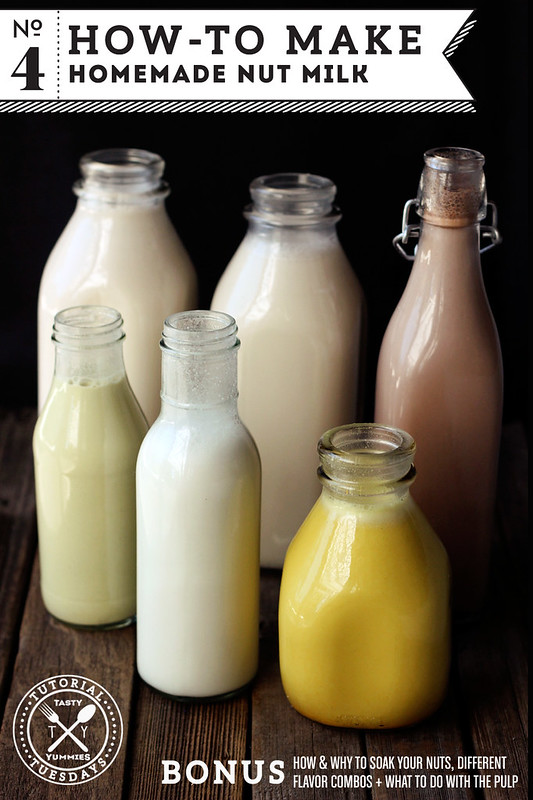

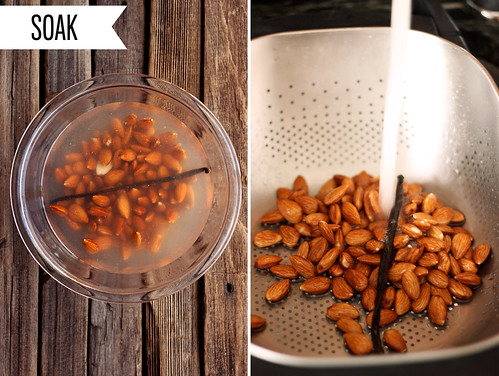


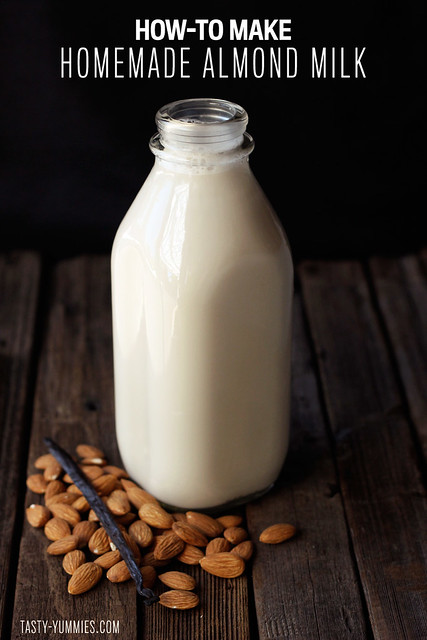
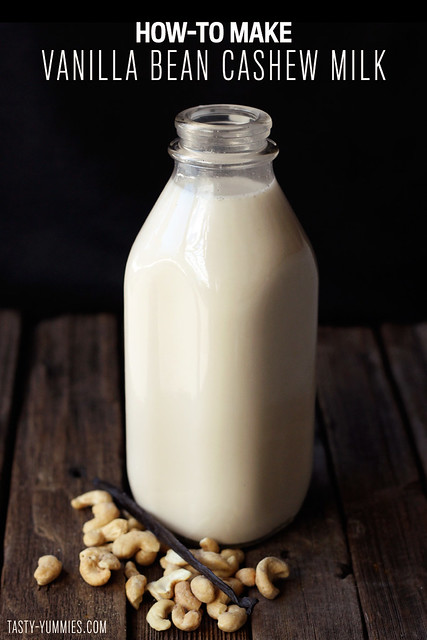
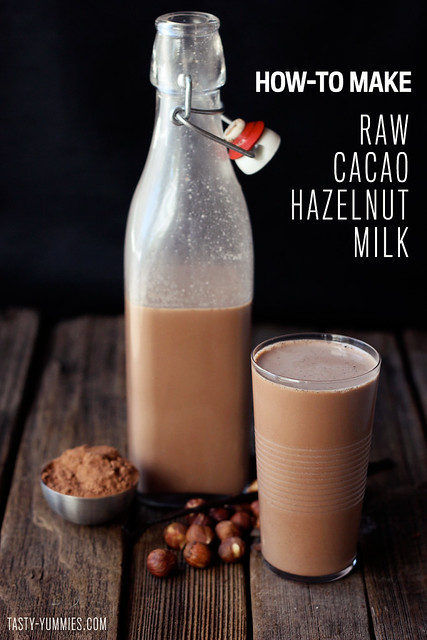
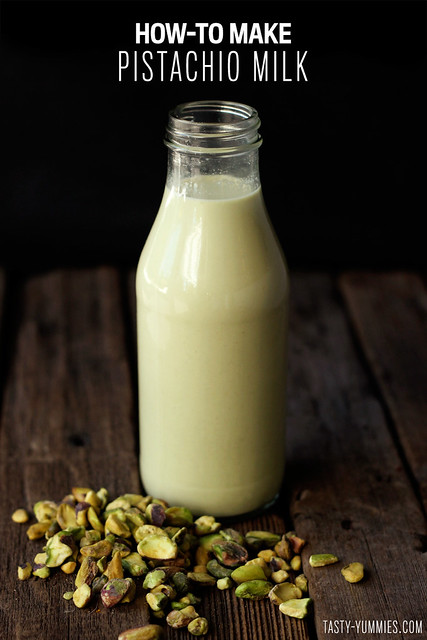



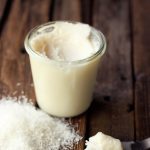
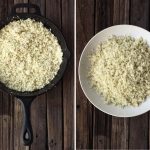
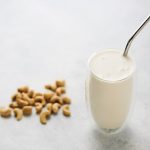
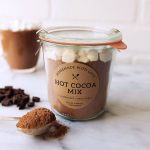







60 Responses
I have been wanting to try making nut milks for awhile. Until now I’ve only made coconut milk, mainly because I don’t really like the taste of almond milk. Though the chocolate hazelnut and vanilla cashew sound amazing!
Great tutorial Beth! I especially appreciate you including the specific nut milk bag you like using. I’m going to get one now and get into the nut milk game!
Thanks for this tutorial, I’m definitely going to try the tumeric almond milk ASAP! I have a question, though: at a few different juice bars I’ve seen nutmilks infused with chlorophyll. Do you know how this is (best) done? I’ve actually never used chlorophyll before…is it a liquid or a powder like spirulina? Would I put it in after straining the milk from the pulp? If you don’t know, that’s alright! I’ll have to experiment…
Nut milks have been on my to-try list for sometime! On average, how many cups of pulp are left after straining? About one?
Beth it actually varies with each nut actually cashews produce way less pulp than almonds. I would say from one cup of almonds you get a little less than one cup of pulp.
Thank you… this is the best nut milk post I have ever seen! I can’t wait to try the recipes – especially the “Nutella milk” for my daughter. 🙂
Thank you for this wonderful overview – I have only tried making plain almond milk but you have inspired me to explore further!
Hi Beth. I have been wanting to get started on nut milks and I believe this post will finally give me the confidence to try it! I HATE buying most of the nut milks (including coconut milk) offered in stores because they have carrageenan and other ingredients that are unnecessary and unhealthy. My question is where do you source your nuts? I know that almonds grown in the US are supposedly “pasteurized” and other nuts may have been sprayed with chemicals. Do you have a source where you can buy nuts without having to buy in great quantities?
Hey! Do you also use that same blender for your nut butters, or is that too much? I don’t have either a high powered blender OR a food processor yet, so I’m trying to decide which one is more important.
Thanks Beth 🙂
Megan
Megan, I got the Vitamix and you can also use it as a food processor on many items.
Megan, yes I have heard from many that their Vitamix or Blendtec blenders are great for nut butters. My Kitchenaid cannot handle nut butters. I would say get yourself a nice blender and you can likely skip a food processor or at least do without for a while. I actually use both my blender and my food processor almost every day. Hope that helps.
This is fantastic! Beautiful, as always – but also so helpful and informative. Thank you! XO
I LOVE TUTORIAL TUESDAYS. But for real, I do. This is an awesome post. I honestly have never made my own almond milk and think it’s about time since I use it daily. Never realized how simple it was! 🙂
Is the organic cotton nut milk bag reusable?
Oh yes very reusable. But that is a great question, thank you. I am going to edit this to include that, thank you!
Splurge now on the vita mix. You will wonder why you waited so long. I have had mine for more years that I can remember. Don’t know what I would do without it!!
Love this post! Thank you so much! A few questions:
Instead of a nut milk bag, could something like the matfer bouillon strainer be used? That has long been on my wish list & I think it might work for nut milks.
Second, I have some cacao nibs in my pantry. Could I grind them & use as the cacao powder in that amazing looking nutella milk?
L
Beth, just stumbled on your blog and am so excited to discover that we are both from LBC! Can you tell me where you purchase your nuts and raw honey? Any bulk retailers or e-tailers you recommend?
Hi there Siyeen, so nice to “meet” you! Yay LBC!! Currently I buy raw honey at either the farmers market on Wednesdays at Marine Stadium or most of the time at Lazy Acres, over on Bellflower. For nuts, I buy raw organic almonds at Lazy Acres usually or Whole Foods, as well as any other raw organic nuts I want. I found a farm up north that sells their raw organic unpasteurized almonds in 25 pound boxes and it is just $8.00/pound, which is insanely cheap (shipping is extra). I just can’t justify nor do I have that much extra money currently to buy that amount at once. Some day 😉 If you ever wanna go in together and get 12.5 lbs of almonds each, you let me know 🙂
Thanks for the info; I shop at those places too. I’m totally down on the going in on the bulk! In fact, I’ve been looking into buying in bulk as well and found two sites: http://www.bragafarms.com/ (located in NorCal) and Nuts.com. Though, I believe yours have better pricing.
Funny to find that you are in Long Beach. I lived at Bellflower and Atherton up until a year ago. We moved to Montana last year. I used to walk to Lazy Acres all the time and sometimes stop at See’s on the way. I still have a jar of honey from the marina farmers market on Sundays. Try Vitamin City on Spring at Palo Verde. They are a little hole in the wall but can have good prices on some things. Thank you for your tutorial. I have made Brazil, almond,and pecan milk. I made double strength cashew milk added some psyllium and fermented it with probiotic powder to make yogurt that we use as a sour cream substitute. I have been putting the pulp in the freezer to make your cookie bars.
I just made my first batch of homemade almond milk this morning, and it was delicious! I also made peanut butter for the first time earlier this week, thanks to your other tutorial. My husband’s initial skepticism regarding the ease of each process and resulting taste was transformed into pleasant surprise and a wholehearted endorsement to stop buying pre-made almond milk and peanut butter. And I’m delighted to have eliminated wasteful packaging from two products we use regularly. Thank you! I’m so glad to have discovered your blog recently. Now I need to review your recipes that use leftover almond pulp.
Thanks for sharing your recepies, I defenitively going to try them.
Where did you find those jars, they’re so pretty!!
I knew you were supposed to soak nuts before turning them into milk, but I didn’t know why. Super interesting! I make hemp milk for my one year old son. He is intolerant/allergic (i.e. he gets hives) to soy, dairy, eggs, etc. He doesn’t mind the flavor of the milk, but when I taste it it’s pretty darn grassy despite the fact that I’m blending in a couple of whole dates and some vanilla bean. Do you think soaking hemp hearts would improve the flavor as it does for the nuts?
Hey Ellyn, glad you found this helpful and informative. Hempseeds actually do not contain phytic acid, the mineral-binding antinutrient common to most nuts, seeds, grains, and legumes. So this means hemp seeds require no soaking to get rid of phytate and likely the flavor wouldn’t be improved much, as it is with the nuts!
why don’t Brazil nuts need to be soaked?
Hi,
Is there any harm in soaking the nuts for more than your prescribed time? Just got my cotton bags and want to start immediately, but 8hrs from now is 10pm and I don’t feel like staying up 🙂
Thanks!
That’s a good question Dan. Basically they will likely just get too soggy or mushy if soaked too long, but I would bet overnight, probably will be OK.
This is utterly (udderly… 🙂 ) gorgeous. I am inspired!
Thank you!
Wondering why you need to strain nut milks? Wouldn’t drinking the milk with the pulp be more nutritious – plus getting benefit of the fiber in the pulp? Thanks
They need to be strained because otherwise it will be quite thick, lumpy and pulpy, not milk-like at all. Of course drinking the pulp would keep ALL of the nutrients possible, but it isn’t very good. Also just an FYI much of the nutrients and vitamins and such actually end up in the milk itself, and the pulp that is leftover is pretty stripped. But for sure the pulp will have the most fiber.
You list coconut under under nut free milks (which it is, it’s botanically a fruit) but as an allergen it is considered a tree nut; people with tree nut allergies have a risk of having a reaction to coconut and should consult their allergist before adding it to their diets.
Can I use the walnut milk pulp interchangeable with almond milk pulp in recipes?
Hmm I am not sure, I have never worked with walnut pulp before. Sorry. I would love to hear how it works out for you, if you try it.
Just made the cashew milk, super delicious! I’m sorry if you already mentioned it, but isitpossible to freeze the milk?
Hey Johanna, so glad you like the milk. I have to be honest, I have never tried nor have I ever thought of freezing the milk. I am not sure if it would work. Seems like it would but I am not totally sure. Maybe do a quick internet search and see if anyone else has? Sorry I cannot be of more help.
Hi ! your tutoriel is excellent. I take your photography squeeze with a link to your article, it is beautiful. Of course, If this you disturb, I take it off. The pistachio milk is wonderfull, and milk almond with curcuma, milk hazelnut with cacao. Thank you very much for this wonderful overview. I like it . PLK
Thanks, I am glad you enjoyed it. I saw the post and I saw that you linked people to my site and credited me, so that is just fine. As long as people do not take my content to share on their sites, I am totally good with it! Thank you!
Zadi
I’m from Panamá hi
I made milk mix nuts ( Almonte, pistacho, hazelnuts) i was so yummi and my doughter three years old loved.
can we mix the ingredients with milk instead of water?
Nice tutorial 🙂
Note* Peanut is not a Nut!
I’ve just tried making my own almond milk for the first time and I’m hooked! What I did withy h leftover meal was make a vegan cheese spread using the almonds, lemon juice, S&P, nutritional yeast, and any other spices you might like! It’s super good in wraps and on crackers 🙂 will have to try your other but milk recipes
Beloved, I really liked your site and want to say THANK you for your great work.
I would like to make reference in my book to your link on how to make a nut milk. much love
Hi,
I´ve read somewhere that you need to add natural sea salt, or Himalayan when you soak to help remove the phytic acid. What are your thoughts on this?
Best regards,
Ida
Hi , I use to make soya milk, but not nut milk, I wonder if we have to boil the nut milk after squeeze it.
Thank you.
Phan.
I have a pretty cheap blender and don’t want to waste my time if it’s not going to work.. Any thoughts? Should I just blend it a little longer than usual?
Just visited to see recipes for nut milk
Thank you
Where do you get your nuts? Are the shells already removed or do you buy them whole and crack them yourself?
I made the vanilla cashew milk yesterday and let me just say…. Yum!! It was so much better than any almond milk I can buy in the store. It didn’t need any sweetener and I loved it was organic, raw and vegan. Thanks for sharing! I used the link you posted to buy a nut bag (my brother and I do unabashedly giggle about it, I do admit) to make some almond and pistachio milk, next on the agenda. So happy I will be able to buy even less processed items now and so easy to do!
Love the tutorial. Thanks! I look forward to making pecan milk and using it in a recipe as a substitute in order to make the dish vegan. I wonder, does it make good ice cream? I’ll have to try that too.
This is one great post! So usefull! Thank you 🙂
Can’t you use regular tap water for the milks? I’m not sure what the difference between tap & filtered. We have a SOMA filter, would that be sufficient? Thanks! I’m excited to try these recipes!
You can, but filtered water removes contaminants, bacteria and any metals that might be present in the tap water, this is preferred not only for drinking regularly but for any time you are creating beverages, as well.
Thank you!
I made some that night, love it! Thank you so much for the recipes and education 🙂
How do you prepare coffee with nut milk
Thank you for amazing tutorials, descriptions and photos. Very important for us soaking information for healty-diet.
How long does the milk last?
5 days usually, 7 days max.
Thank you so much for this amazing tutorial. I have just made the pistachio milk and I love it!!! Silly me I didn’t read the entire after post comments so I was wondering what to do with the left over crushed pistachios. Now I need to find something to do with it so I don’t lose it or I will take your advice and freeze it.